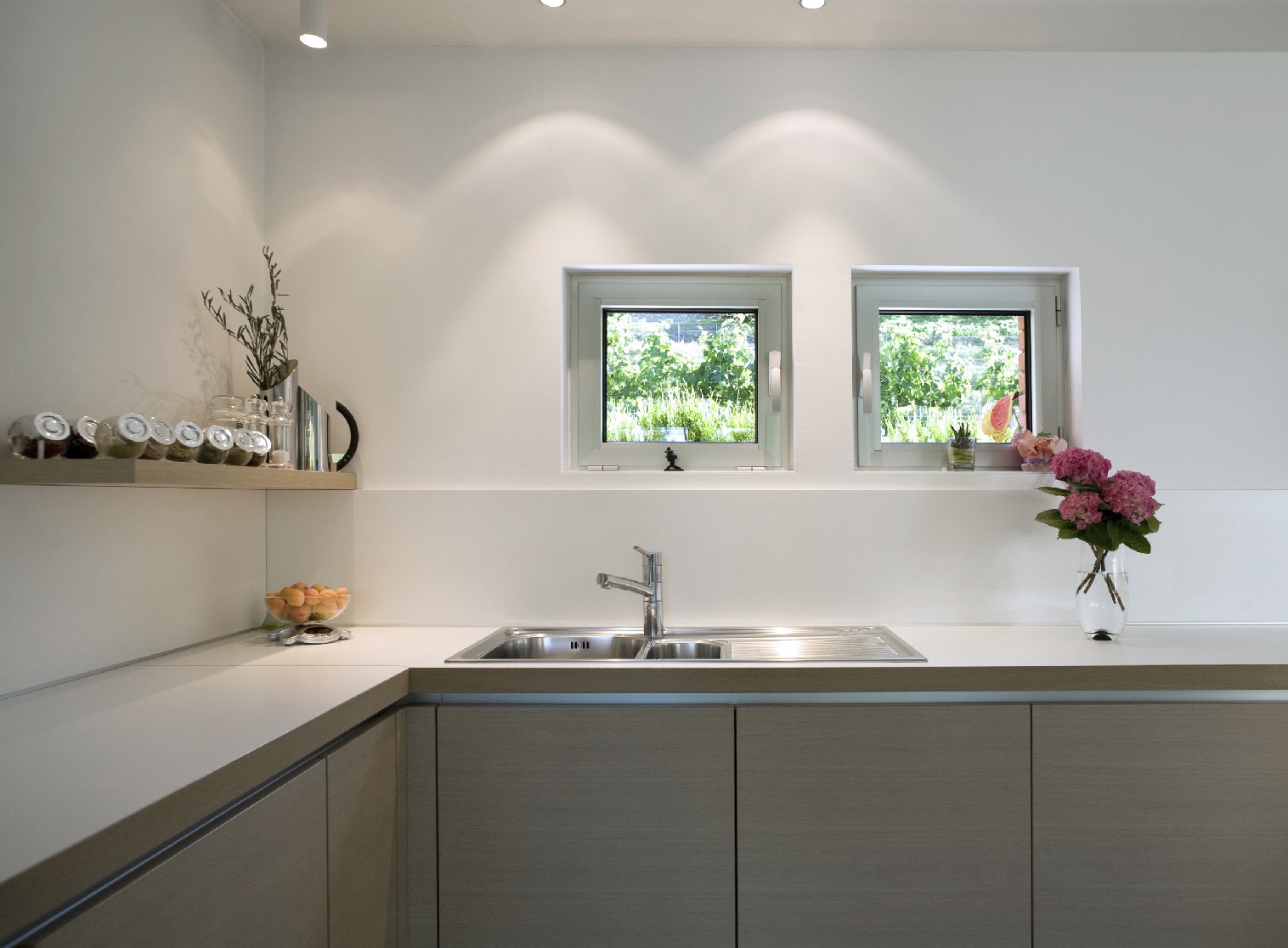Choosing a paint color for your kitchen walls may seem like a daunting task, but with the right guidance, it can be an enjoyable and rewarding experience. The kitchen is often the heart of the home, and the color of its walls can greatly impact the overall look and feel of the space. So, how do you choose the perfect paint color for your kitchen walls? First and foremost, consider the overall style and design of your kitchen. Is it modern and sleek, or is it more traditional and cozy? This will help guide you in selecting a color that complements the existing aesthetic of the room. Next, think about the natural light that enters your kitchen. If your kitchen gets a lot of natural light, you may want to opt for a lighter or brighter color to enhance the natural brightness. If your kitchen is lacking in natural light, consider choosing a warmer or richer color to add depth and warmth to the space. Another helpful tip is to consider the size of your kitchen. If you have a smaller kitchen, choosing a light or neutral color can help create the illusion of a larger space. On the other hand, if you have a large kitchen, you can experiment with bolder or darker colors to add drama and personality. When it comes to choosing specific paint colors, consider using color psychology to guide your decision. For example, if you want to create a calming and inviting atmosphere in your kitchen, consider shades of blue or green. If you want to add a pop of energy and excitement, consider using a bold red or orange.1. How to Choose the Perfect Paint Color for Your Kitchen Walls
If you're feeling overwhelmed by the seemingly endless options for paint colors, here are some helpful tips to keep in mind: Consider the color of your cabinets: Your kitchen cabinets will take up a large portion of the visual space in the room, so it's important to consider their color when choosing a paint color for your walls. If your cabinets are a dark color, you may want to choose a lighter color for your walls to avoid making the space feel too dark and closed off. Use a color wheel: A color wheel is a great tool for understanding color theory and how different colors complement each other. You can use it to create a color scheme for your kitchen walls and ensure that the colors you choose will work well together. Look at paint samples in different lighting: It's important to view paint samples in different lighting conditions to get a better idea of how the color will look in your kitchen. The lighting in a store may not be the same as the lighting in your kitchen, so be sure to bring home paint samples and view them in natural light and artificial light. Consider the function of your kitchen: The function of your kitchen can also play a role in choosing a paint color. If you have a busy kitchen that is used for cooking and entertaining, you may want to choose a color that is more forgiving when it comes to stains and spills. On the other hand, if your kitchen is primarily used for meal prep and cooking, you may want to choose a color that stimulates appetite, such as shades of red or yellow.2. Tips for Choosing the Right Paint Color for Your Kitchen Walls
Now that you have some tips for choosing the right paint color, let's explore some of the best paint colors for kitchen walls: White: While it may seem like a simple and boring choice, white is a classic and versatile color for kitchen walls. It can make a smaller kitchen feel brighter and more spacious, and it complements a variety of cabinet colors. Gray: Gray has become a popular choice for kitchen walls as it adds a touch of sophistication and elegance to the space. It also pairs well with both warm and cool tones, making it a versatile choice. Greige: A combination of gray and beige, greige is a warm and inviting color that can add warmth and depth to your kitchen walls. It's also a great neutral option if you're looking for something other than white. Blue: Blue is a calming and serene color that can create a tranquil atmosphere in your kitchen. Lighter shades of blue can make a small kitchen feel larger, while darker shades can add drama and depth. Green: Green is another calming color that can bring a touch of nature into your kitchen. It pairs well with both warm and cool tones and can add a refreshing and natural vibe to the space.3. The Best Paint Colors for Kitchen Walls
As mentioned earlier, white is a popular and versatile choice for kitchen walls. However, choosing the right shade of white can be tricky as there are many different shades available. Here are some tips to help you choose the perfect shade of white for your kitchen walls: Consider the undertones: White paint can have warm or cool undertones, which can greatly impact the overall feel of your kitchen. If your cabinets have warm undertones, consider choosing a white with warm undertones to create a cohesive look. Test it out: As mentioned earlier, it's important to test paint colors on your walls before committing. This is especially important for white paint as it can look different in different lighting conditions. Test a few different shades of white on your walls and view them in different lighting to see which one you like best. Consider the finish: The finish of your paint can also impact the overall look of your walls. A matte or eggshell finish can add a subtle elegance, while a high-gloss finish can make a statement and add a modern touch.4. Choosing the Right Shade of White for Your Kitchen Walls
As mentioned earlier, color psychology can be a helpful tool in choosing the perfect paint color for your kitchen walls. Here are some common colors and their psychological effects: Red: Red is a bold and energetic color that can stimulate appetite and conversation. It's a great choice for kitchens that are used for entertaining and socializing. Yellow: Yellow is a cheerful and uplifting color that can add warmth and brightness to your kitchen. It's also known to stimulate hunger, making it a great choice for kitchens. Blue: Blue is a calming and serene color that can create a relaxing atmosphere in your kitchen. It's a great choice for those who want a more tranquil and peaceful space. Green: Green is a refreshing and natural color that can bring a touch of the outdoors into your kitchen. It's also known to have a calming effect, making it a great choice for busy kitchens.5. How to Use Color Psychology to Choose the Perfect Paint Color for Your Kitchen Walls
If you're still unsure about which paint color to choose for your kitchen walls, here are some popular options that may inspire you: Benjamin Moore's "Simply White": This warm white shade is a popular choice for kitchen walls as it adds a touch of warmth and brightness to the space. Sherwin Williams' "Repose Gray": This light gray shade has become a popular choice for kitchen walls as it adds a touch of sophistication and can complement a variety of cabinet colors. Farrow & Ball's "Stony Ground": This greige shade is a great choice for those looking for a warm and inviting color for their kitchen walls. It's also a versatile neutral that pairs well with a variety of colors. Behr's "Watery": This light blue shade is a great option for those looking to add a pop of color to their kitchen walls. It's a calming and refreshing choice that can add a touch of personality to the space.6. Popular Paint Colors for Kitchen Walls
As mentioned throughout this article, it's important to test paint colors on your kitchen walls before committing to a color. Here are some tips for testing paint colors: Use paint samples: Most paint stores offer small paint samples for a minimal cost. Purchase a few samples of the colors you're considering and paint them onto your walls to see how they look in your kitchen. View them in different lighting: As mentioned earlier, it's important to view paint samples in different lighting conditions to get a better idea of how the color will look in your kitchen. Consider the time of day: Colors can look different depending on the time of day, so be sure to view your paint samples at different times to see how they look in natural light and artificial light.7. How to Test Paint Colors on Your Kitchen Walls Before Committing
When choosing a paint finish for your kitchen walls, it's important to consider the level of durability and maintenance you want. Here are some common paint finishes and their characteristics: Matte: A matte finish has no shine and is great for hiding imperfections on your walls. However, it may be more difficult to clean and may not hold up well in high-traffic areas. Eggshell: An eggshell finish has a slight sheen and is a popular choice for kitchen walls. It's easy to clean and can add a subtle elegance to the space. Satin: A satin finish has a higher sheen than eggshell and is also easy to clean. However, it may show more imperfections on your walls. Semi-gloss: A semi-gloss finish has a shiny appearance and is the most durable and easy to clean. However, it can also show imperfections and may not be suitable for all kitchen styles.8. Choosing a Paint Finish for Your Kitchen Walls
Before we wrap up, here are some dos and don'ts to keep in mind when choosing a paint color for your kitchen walls: Do: Consider the style and design of your kitchen, test paint samples in different lighting, and use color psychology to guide your decision. Don't: Be afraid to experiment with color, forget to consider the function of your kitchen, or choose a paint color without testing it on your walls first.9. The Dos and Don'ts of Choosing a Paint Color for Your Kitchen Walls
Finally, let's discuss how to coordinate paint colors for your kitchen walls and cabinets. Here are some tips to help you achieve a cohesive and complementary look: Choose a color scheme: Use a color wheel to choose a color scheme for your kitchen. This will help guide your decisions and ensure that the colors you choose work well together. Use contrasting colors: If you have white cabinets, consider using a darker color for your walls to create a contrast and add depth to the space. Go monochromatic: If you prefer a more subtle look, consider choosing different shades of the same color for your walls and cabinets. This can create a cohesive and harmonious look. Match undertones: When choosing different colors for your walls and cabinets, be sure to consider the undertones and make sure they complement each other. In conclusion, choosing a paint color for your kitchen walls can be a fun and exciting process. Keep these tips and suggestions in mind, and you'll be on your way to creating a beautiful and inviting kitchen that reflects your personal style and taste. Don't be afraid to experiment with different colors and have fun with the process. Happy painting!10. How to Coordinate Paint Colors for Your Kitchen Walls and Cabinets
Choosing the Perfect Paint Color for Your Kitchen Walls

Factors to Consider
 When it comes to designing your dream kitchen,
choosing the right paint color for the walls is crucial
. Not only does it set the tone for the entire space, but it also has the power to make or break the overall aesthetic. With so many color options available, it can be overwhelming to make a decision. However, by considering a few key factors, you can confidently choose a paint color that will enhance your kitchen design.
When it comes to designing your dream kitchen,
choosing the right paint color for the walls is crucial
. Not only does it set the tone for the entire space, but it also has the power to make or break the overall aesthetic. With so many color options available, it can be overwhelming to make a decision. However, by considering a few key factors, you can confidently choose a paint color that will enhance your kitchen design.
The Kitchen's Function
.jpg) The first factor to consider is the function of your kitchen
. Is it a busy family gathering space or a more formal cooking area?
If your kitchen is a high-traffic area, it's best to choose a paint color that can withstand wear and tear
. Consider using a durable and washable paint, such as a satin or semi-gloss finish. For a more formal kitchen, you may opt for a softer and more delicate hue.
The first factor to consider is the function of your kitchen
. Is it a busy family gathering space or a more formal cooking area?
If your kitchen is a high-traffic area, it's best to choose a paint color that can withstand wear and tear
. Consider using a durable and washable paint, such as a satin or semi-gloss finish. For a more formal kitchen, you may opt for a softer and more delicate hue.
The Lighting
:max_bytes(150000):strip_icc()/149957873-56a49ee15f9b58b7d0d7e016.jpg) Lighting plays a significant role in how a paint color will appear in a space
. Natural light can bring out different undertones in a color, while artificial light can create a different ambiance. Take note of the direction your kitchen faces and the type of lighting it has.
If your kitchen has limited natural light, opt for lighter paint colors to brighten up the space
. If your kitchen has ample natural light, you can experiment with darker or bolder colors.
Lighting plays a significant role in how a paint color will appear in a space
. Natural light can bring out different undertones in a color, while artificial light can create a different ambiance. Take note of the direction your kitchen faces and the type of lighting it has.
If your kitchen has limited natural light, opt for lighter paint colors to brighten up the space
. If your kitchen has ample natural light, you can experiment with darker or bolder colors.
The Color Scheme
 It's important to think about the overall color scheme of your home when choosing a paint color for your kitchen walls
. You want the color to complement the rest of your home's design rather than clash with it.
If your home has a neutral color palette, you may want to add a pop of color to your kitchen walls to create contrast
. If your home has a more vibrant color scheme, consider using a coordinating color for your kitchen walls to maintain a cohesive look.
It's important to think about the overall color scheme of your home when choosing a paint color for your kitchen walls
. You want the color to complement the rest of your home's design rather than clash with it.
If your home has a neutral color palette, you may want to add a pop of color to your kitchen walls to create contrast
. If your home has a more vibrant color scheme, consider using a coordinating color for your kitchen walls to maintain a cohesive look.
Your Personal Style
 Finally,
your personal style and preferences should also play a role in choosing a paint color for your kitchen walls
. Do you prefer a more traditional or modern look? Are you drawn to bold or muted colors? Your kitchen should reflect your unique style and personality.
Don't be afraid to take risks and choose a color that speaks to you
. After all, it's your kitchen, and you should love the way it looks.
In conclusion,
choosing a paint color for your kitchen walls involves careful consideration of various factors
. By taking into account the function of your kitchen, the lighting, the color scheme of your home, and your personal style, you can confidently choose a paint color that will enhance your kitchen design and create the perfect atmosphere for your culinary adventures. So go ahead and have fun with color, and transform your kitchen into the heart of your home.
Finally,
your personal style and preferences should also play a role in choosing a paint color for your kitchen walls
. Do you prefer a more traditional or modern look? Are you drawn to bold or muted colors? Your kitchen should reflect your unique style and personality.
Don't be afraid to take risks and choose a color that speaks to you
. After all, it's your kitchen, and you should love the way it looks.
In conclusion,
choosing a paint color for your kitchen walls involves careful consideration of various factors
. By taking into account the function of your kitchen, the lighting, the color scheme of your home, and your personal style, you can confidently choose a paint color that will enhance your kitchen design and create the perfect atmosphere for your culinary adventures. So go ahead and have fun with color, and transform your kitchen into the heart of your home.






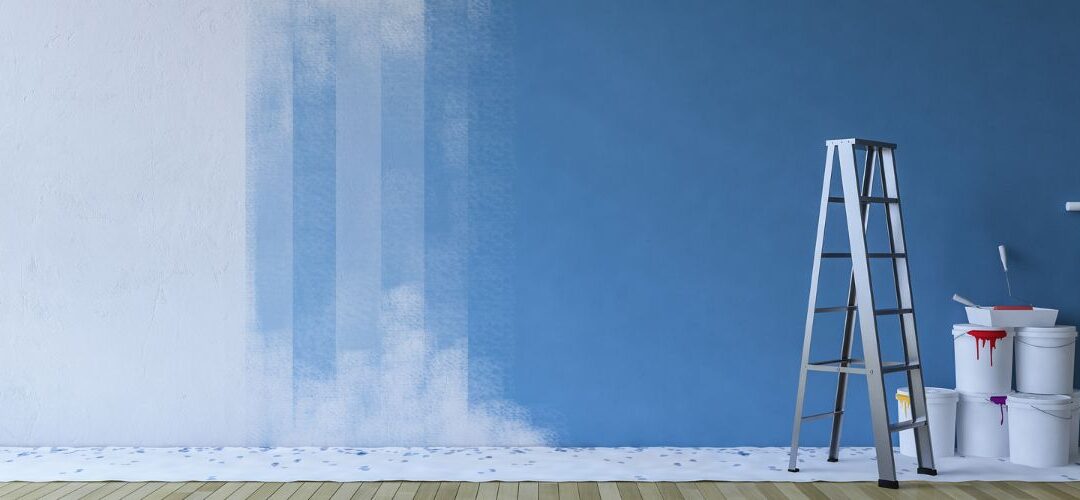































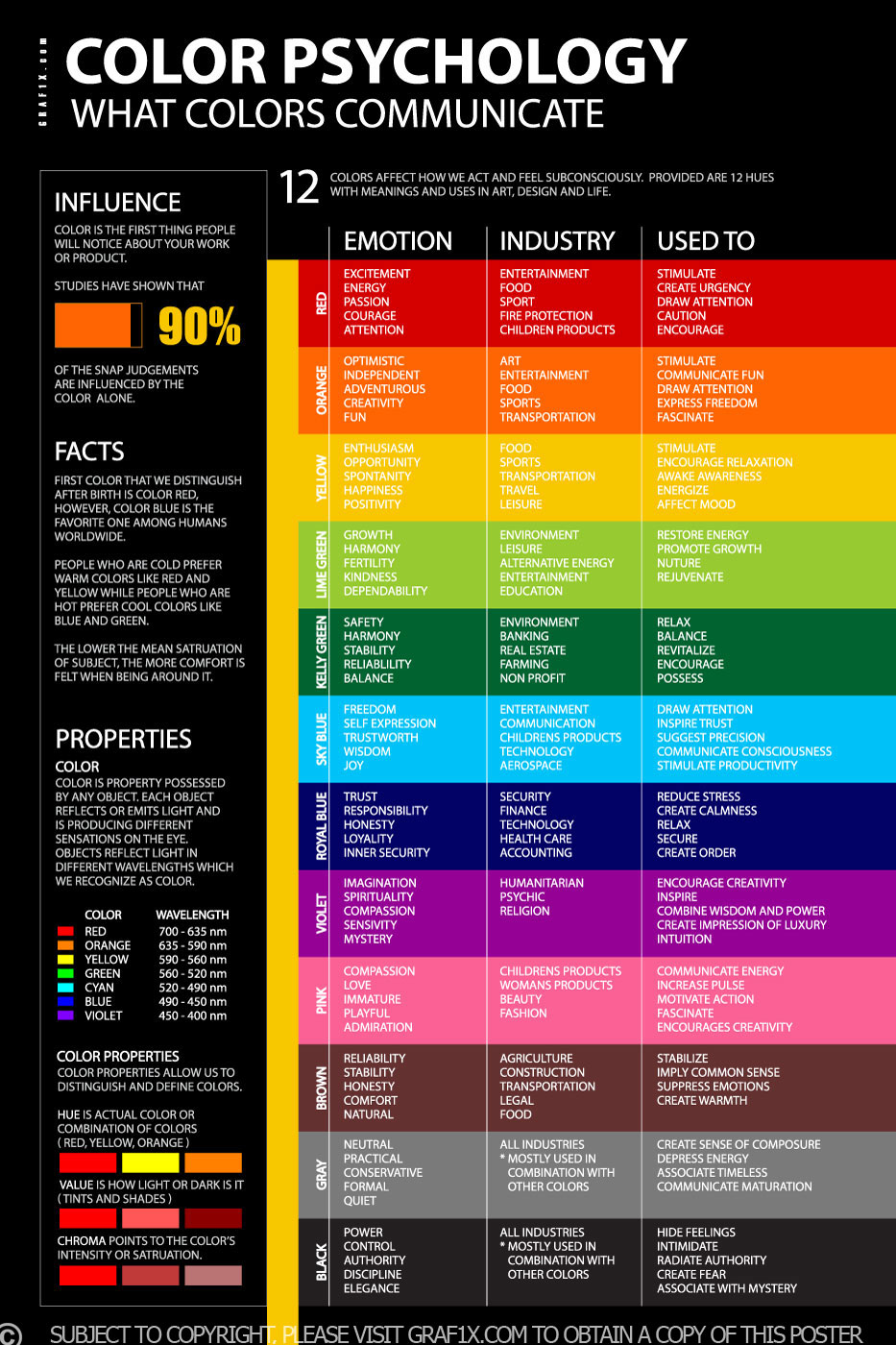












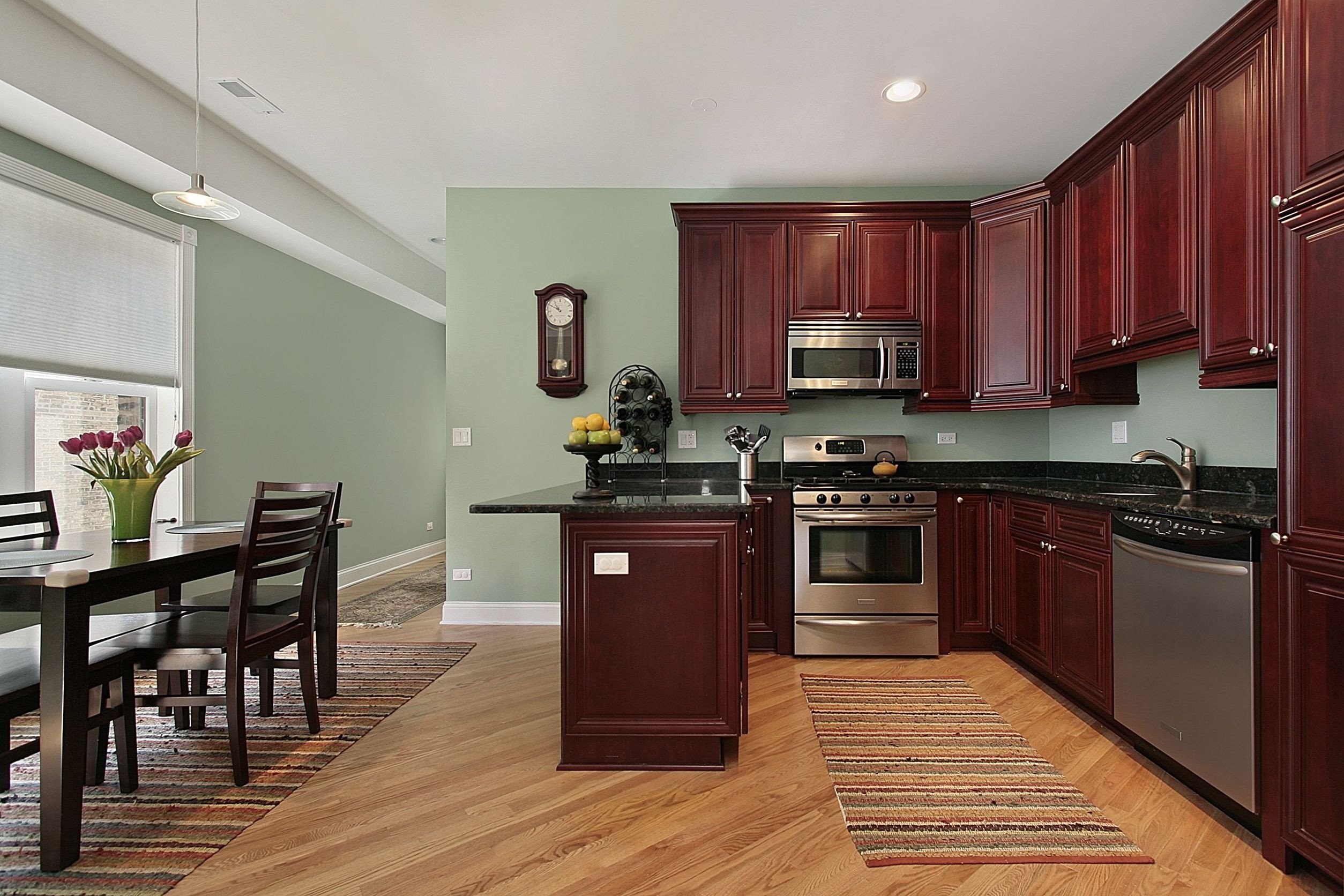





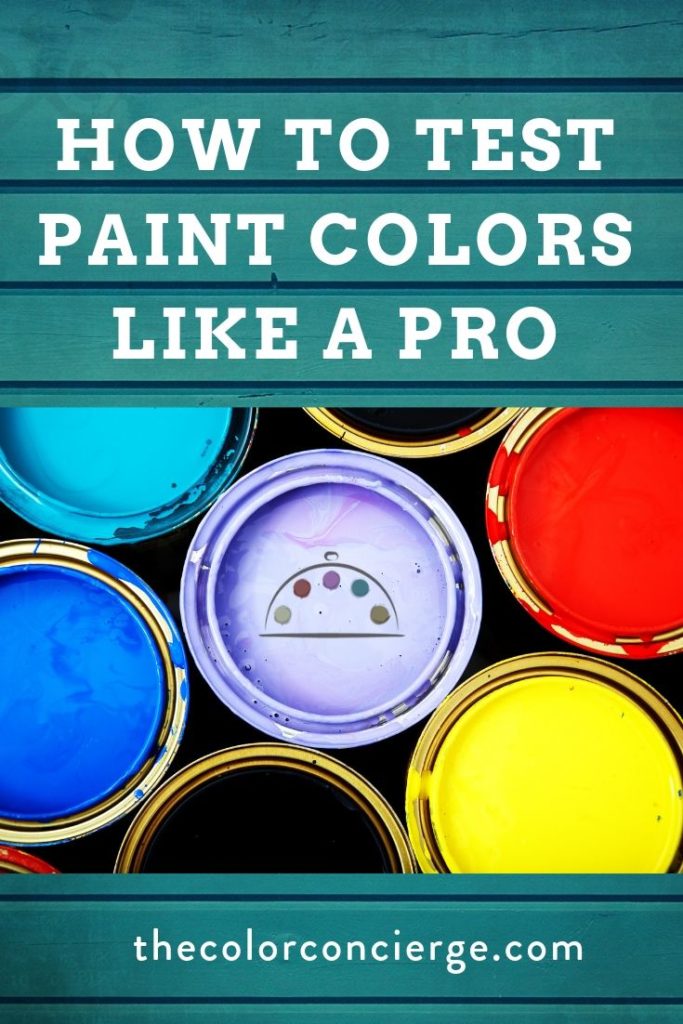







:max_bytes(150000):strip_icc()/149957873-56a49ee15f9b58b7d0d7e016.jpg)






